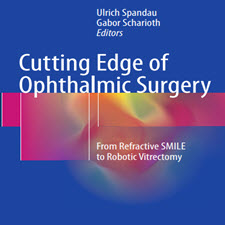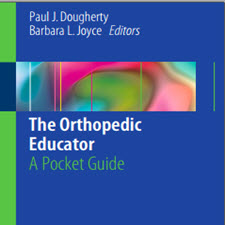Evidence-based Therapy in Vascular Surgery
ABSTRACT
Recommendations for management of asymptomatic carotid artery disease (European Stroke Organisation et al. 2011): • All patients with asymptomatic carotid artery stenosis should be treated with long-term antiplatelet therapy. (Class-I-recommendation/Level of evidence B) • All patients with asymptomatic carotid artery stenosis should be treated with long-term statin therapy. (Class-I-recommendation/Level of evidence C) • In asymptomatic patients with carotid artery stenosis ≥60%, CEA should be considered as long as the perioperative stroke and death rate for procedures performed by the surgical team is <3% and the patient’s life expectancy exceeds 5 years. (Class-IIa-recommendation/Level of evidence A) • In asymptomatic patients with an indication for carotid revascularization, CAS may be considered as an alternative to CEA in high- volume centres with documented death or stroke rate <3%. (Class-IIb-recommendation/Level of evidence B) Recommendations for management of symptomatic carotid artery disease: • All patients with symptomatic carotid stenosis should receive long-term antiplatelet therapy. (Class-I-recommendation/Level of evidence A) • All patients with symptomatic carotid stenosis should receive long-term statin therapy. (Class-I-recommendation/Level of evidence B) • In patients with symptomatic 70–99% stenosis of the internal carotid artery, CEA is recommended for the prevention of recurrent stroke. (Class- Irecommendation/Level of evidence A).
INTRODUCTION
Recommendations for selection of patients for carotid revascularization (Brott et al. 2011): Class I • Patients at average or low surgical risk who experience non disabling ischemic stroke or transient cerebral ischemic symptoms, including hemispheric events or amaurosis fugax, within 6 months (symptomatic patients) should undergo CEA if the diameter of the lumen of the ipsilateral internal carotid artery is reduced more than 70% as documented by noninvasive imaging (Level of Evidence: A) or more than 50% as documented by catheter angiography (Level of Evidence: B) and the anticipated rate of perioperative stroke or mortality is less than 6%. • CAS is indicated as an alternative to CEA for symptomatic patients at average or low risk of complications associated with endovascular intervention when the diameter of the lumen of the internal carotid artery is reduced by more than 70% as documented by noninvasive imaging or more than 50% as documented by catheter angiography and the anticipated rate of periprocedural stroke or mortality is less than 6% (Level of Evidence: B).
چکیده
توصیه هایی برای درمان بیماری عروق کرونر بدون علامت (European Stroke Organization و همکاران، 2011): • همه بیماران مبتلا به تنگی شرایین کاروتید بدون علامت باید با درمان طولانی مدت آنتی بادی تلقی شود. (توصیه نامه کلاس / / سطح شواهد B) • همه بیماران مبتلا به استنوز شريان کاروتيد بدون علامت بايد با درمان با استاتين درازمدت درمان شوند. (توصیه کلاس I / سطح شواهد C) • در بیماران بدون علامت با تنگی شريان کاروتيدي ≥60٪، CEA بايد تا زمانيکه سکته مغزي و مرگ و مير براي روش انجام شده توسط گروه جراح کمتر از 3٪ باشد و امید به زندگی بیمار بیش از 5 سال است. (توصیه نامه کلاس IIa / سطح شواهد A) • در بیماران بدون علامت با نشانه ای برای واکسیناسیون کاروتید، CAS ممکن است به عنوان یک جایگزین برای CEA در مراکز بزرگ با مرگ مستمر و یا سکته مغزی <3٪ در نظر گرفته شود. (توصیه کلاس IIb / سطح شواهد B) توصیه هایی برای مدیریت بیماری عروق کرونر: همه بیماران مبتلا به تنگی کاروتید علائمی باید مدت زمان درمان آنتی بادی را دریافت کنند. (Class I recommendation / Level of evidence A) • همه بیماران مبتلا به تنگی کاروتید علامت دار باید درمان با استاتین درازمدت دریافت کنند. (توصیه نامه کلاس / سطح شواهد B) • در بیماران مبتلا به سفتی 70-99٪ عصب شريان کاروتيد داخلی، CEA برای پيشگيری از سکته مغزی مجدد توصيه می شود. (Class Irecommendation / Level of evidence A).
مقدمه
توصیه هایی برای انتخاب بیماران برای واکسیناسیون کاروتید (Brott و همکاران، 2011): کلاس I • بیماران با ریسک متوسط یا پایین جراحی که در طی 6 ماه (6 ماه) علائم ایسکمیک مغزی غیرمعرفتار یا علائم ایسکمیک مغزی را تجربه می کنند، از جمله حوادث نیم کره یا فوگکس آواوروز بیماران) CEA باید در صورتی که قطر لومن شريان کاروتيد داخلي داخلي بيش از 70 درصد کاهش يافته باشد، همانطور که توسط تصويربرداري غيرتهاجمي (سطح شواهد: A) يا بيش از 50 درصد توسط آنژيوگرافي کاتتر ثبت شده (سطح شواهد: ب) و میزان پیش بینی شده سکته مغزی یا مرگ و میر کمتر از 6٪ است. • CAS به عنوان یک جایگزین برای CEA برای بیماران علامت در خطر متوسط یا کم خطر عوارض ناشی از مداخلات آندوواسیکال نشان داده شده است، زمانی که قطر لومن شريان کاروتيد داخلی بيش از 70 درصد کاهش يافته است، همانطور که توسط تصويربرداری غيرتهاجمی يا بيش از 50 ٪ همانطور که توسط آنژیوگرافی کاتتر ثبت شده است و میزان پیش بینی سکته مغزی یا مرگ و میر پروپروسهور کمتر از 6٪ است (سطح شواهد: B).
Year: 2017
Publisher : SPRINGER
By : E. Sebastian Debus,Reinhart T. Grundmann
File Information: English Language/ 289 Page / size: 1.90 KB
سال : 1396
ناشر : SPRINGER
کاری از : E. Sebastian Debus، Reinhart T. Grundmann
اطلاعات فایل : زبان انگلیسی / 289 صفحه / حجم : KB 1.90


![Evidence-based.Therapy.in.Vascular[taliem.ir]](https://taliem.ir/wp-content/uploads/Evidence-based.Therapy.in_.Vasculartaliem.ir_.jpg)
![Transsphenoidal.Surgery.Complication.Avoidance.[taliem.ir] Transsphenoidal.Surgery.Complication.Avoidance.[taliem.ir]](https://taliem.ir/wp-content/uploads/Transsphenoidal.Surgery.Complication.Avoidance.taliem.ir_.jpg)

![ESC.Textbook.of.Vascular.Biology.[taliem.ir] ESC.Textbook.of.Vascular.Biology.[taliem.ir]](https://taliem.ir/wp-content/uploads/ESC.Textbook.of_.Vascular.Biology.taliem.ir_.jpg)
![Hiatal.Hernia.Surgery.An.Evidence.Based.Approach.[taliem.ir] Hiatal.Hernia.Surgery.An.Evidence.Based.Approach.[taliem.ir]](https://taliem.ir/wp-content/uploads/Hiatal.Hernia.Surgery.An_.Evidence.Based_.Approach.taliem.ir_.jpg)
![Radiation.Therapy.for.Liver.Tumors.[taliem.ir] Radiation.Therapy.for.Liver.Tumors.[taliem.ir]](https://taliem.ir/wp-content/uploads/Radiation.Therapy.for_.Liver_.Tumors.taliem.ir_.jpg)
![Common.Problems.in.Acute.Care.[taliem.ir] Common.Problems.in.Acute.Care.[taliem.ir]](https://taliem.ir/wp-content/uploads/Common.Problems.in_.Acute_.Care_.taliem.ir_.jpg)

![Phacoemulsification.Cataract.Surgery.[taliem.ir] Phacoemulsification.Cataract.Surgery.[taliem.ir]](https://taliem.ir/wp-content/uploads/Phacoemulsification.Cataract.Surgery.taliem.ir_.jpg)
![Bipolar.Disorder.in.Older.Age[taliem.ir]](https://taliem.ir/wp-content/uploads/Bipolar.Disorder.in_.Older_.Agetaliem.ir_-150x150.jpg)
![Cancer and[taliem.ir]](https://taliem.ir/wp-content/uploads/Cancer-andtaliem.ir_-150x150.jpg)
دیدگاه خود را ثبت کنید
تمایل دارید در گفتگو شرکت کنید؟نظری بدهید!